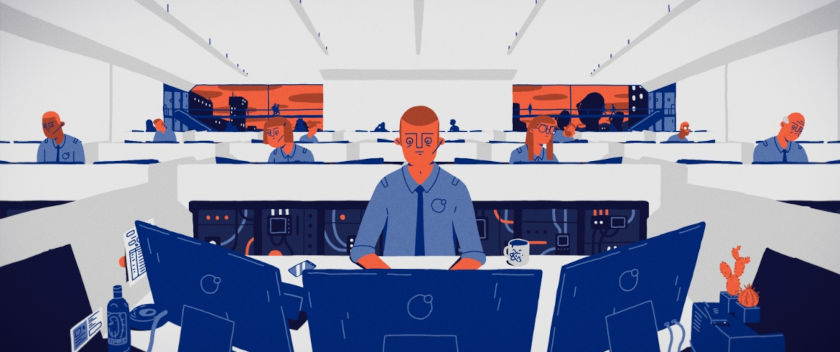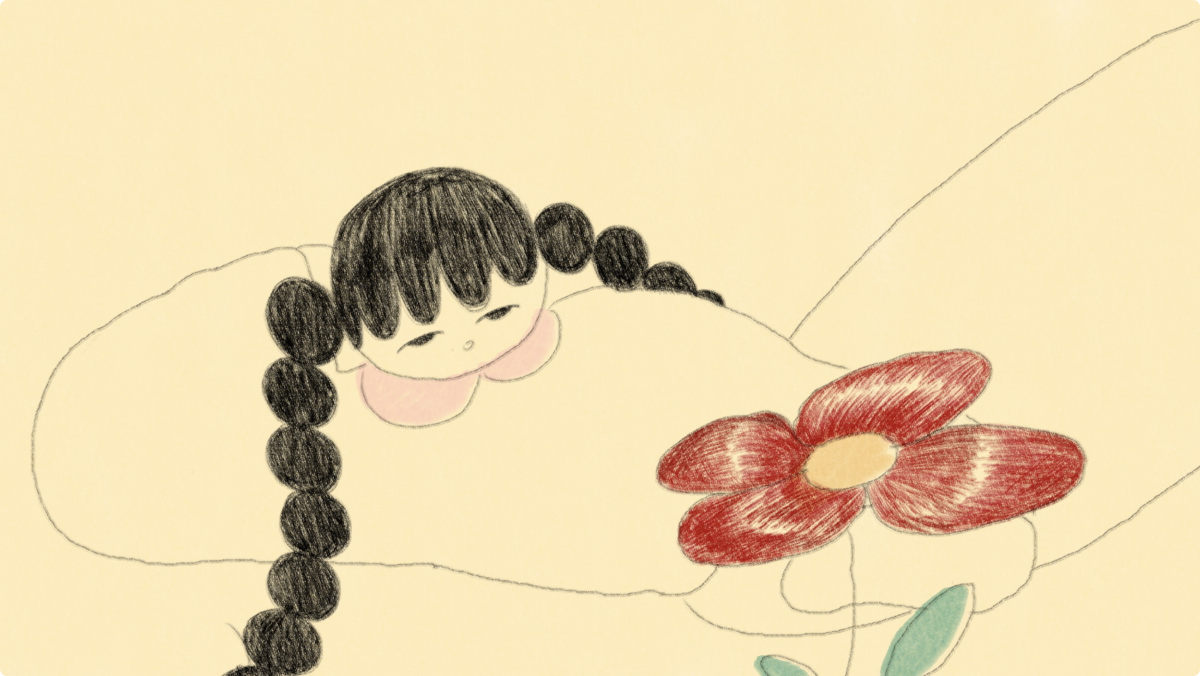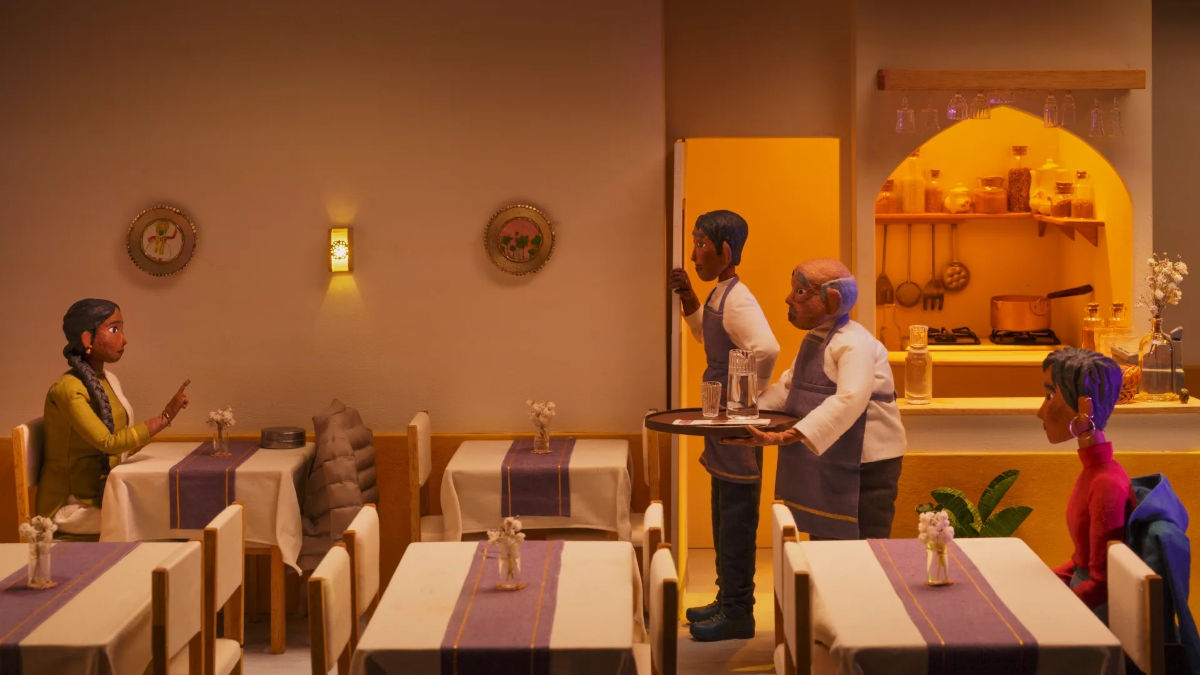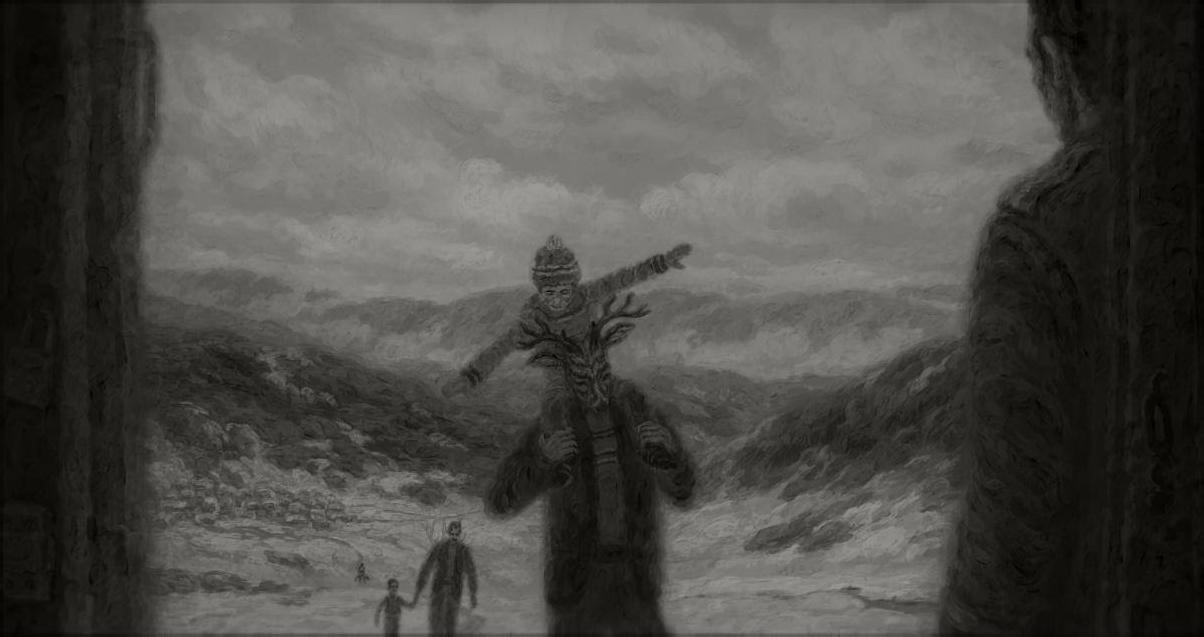The Lonely Orbit by Frederic Siegel & Benjamin Morard

Leaving for his dream job, a satellite technician keeps solitude at bay by constantly texting with his old friends. After neglecting his duties, a satellite leaves its orbit which causes the world's network to collapse.
Frederic Siegel (Ruben Leaves) teamed up with Benjamin Morard to concoct a short meditative film about space and the human presence, The Lonely Orbit (production: Team Tumult).
Watch The Lonely Orbit:
Frederic Siegel talks to Zippy Frames.
ZF: In both Ruben Leaves and The Lonely Orbit, the characters are insecure, lonely and do a lot of damage (to themselves or to others). Is this a subject that fascinates you or it just occurred as a matter of fact?
FS:As an introverted person, I think about a lot of things way too hard and way too much. Insecurity and loneliness are just two topics that are circling in my brain in an endless loop. In order to make sense of all my thoughts, I feel like I’ve found the perfect outlet: telling stories and making films. To be more precise; In „Ruben Leaves“ I’m pondering upon my own compulsive obsessions and day-dreaming habits, while in „The Lonely Orbit“ I’m confronting my own feelings of loneliness and my relationship with digital communication.
Actually I like to think that when someone is watching one of my films, they are actually watching me, tidying my mind in real-time, asking myself questions and thinking about a problem or an idea very hard. Inevitably there will be a sequence in all of my movies, where I’m breaking everything down to its pieces. Sometimes I will just reassemble them into a new understanding of the situation like in „The Lonely Orbit“ and sometimes I just come to terms with my problems, and accept them as a part of myself like in „Ruben Leaves“.
ZF: Which idea came first in The Lonely Orbit? The lack of personal, physical communication or the satellite and space idea?
FS: Actually, the first visual ideas for the film were the two images of a satellite in space, burning up in a huge fireball and a man walking through a bar, burning up in the same way. I was intrigued by the metaphor of a human, living his life mirroring the life of a satellite, even sharing its fate of gloriously bursting into flames in the end. After that, we started to find narrative cues that connect satellites and humans, to build a story around them. Finally, the topic of loneliness and being connected to your friends via smartphone resonated with both of us.
ZF: What was the division of duties between the two co-directors?
FS: In pre-production, Beni & I worked together to develop the story, which came out of a single visual and a vague topic of loneliness. It helped massively to work together with Beni, crafting a narrative around the images. It was very freeing and eye-opening to just talk about the themes. We also worked together on the storyboard, each of us drawing different sequences, interchanging and combining during the process. After that, we started to split some of the work. While I was in charge of the design and the overall direction of the animation, Beni was in charge of the editing and the production management.
ZF: Did you have any specific instructions to give your layout and background artists in order to create your backgrounds? I was also wondering about the main character's own place and home, it's both cozy and cold.
FS: For the layout of the backgrounds, we were only loosely inspired by real places or institutions. We just looked at a few pictures of NASA control rooms and satellite images, to get a general feel for these locations. But for me, the most important thing was just to show a lot of empty space, to demonstrate a feeling of being lost in the frame. So we tried to make the environments feel vast and big, especially the control room, the outdoor earth sequences and space in general, mostly placing the characters right in the middle to underline their state of mind. To contrast that, I wanted some places to appear smaller and more cozy, like the pub in the end. It should be inviting, lovingly detailed and reminiscent of more warm and emotional feelings.
Watch the Making of The Lonely Orbit
In general, we’re also changing environments through the use of light. So in the case of the satellite operator’s flat, the white walls make it appear colder when the lights are on; but when he turns the lights off, it covers the setting in warm blue colours, giving it a more cozy and friendly vibe.
ZF: The film carefully divides its time between the personal and the outer space environment. Was this planned already at the storyboard/animatic stage?
FS: In the beginning we wanted to tell the whole story in two completely separate, equally timed parts. First, the whole story of the satellite, losing connection and trying to reestablish it by dropping himself down to earth. The second part would have started immediately after the crash, with a puzzled satellite operator in the control room, going through his own narrative, metaphorically mirroring the story of the satellite. In the development of this structure, we encountered several storytelling problems. We finally decided to split the stories and interweave them into a more action-reaction kind of story. So it’s no coincidence, that it feels carefully timed. It's actually twice the same story, edited together in the script/storyboard stage of the production. So the satellite feels more emotional, because we projected its story on the human, not the other way round. It was always the plan to convey the operator’s loneliness and longing for connection not through his own eyes, but through the eye of the satellite, so to speak.
ZF: What is the importance of sound in the film, and how did you balance between music, the various voices and the celestial sounds of satellites etc?
FS: From the beginning, sound and music played a crucial role for us. We started working with our sound designers Kilian Vilim & Thomas Gassmann and our musician Luc Gut in the very early stages of production, asking them to add first drafts of the soundtrack, while we were still editing the animatic at the same time. This way we were able to have kind of a back-and-forth conversation, responding to each other's edits, reacting to each other's ideas numerous times during the whole period of production. This was a great way to perfectly balance all the three elements (film, sound, music).
The mix of voices on the satellites channels and in the control room on earth convey the over-stimulation of digital communication, while the absence of sound really emphasizes the loneliness of both the operator and the satellite, when they lose their connections. For the music, we agreed early on that we want to have a very minimalistic, synth-based soundtrack, inspired by electronic music pioneers like Laurie Spiegel. The simple and repetitive sounds mimic routine and the cold side of the story, while also having a warm and melodic sub-tone to represent human connection.
The final track is actually an existing piece of music called „Seabed Meditation“ by Norm Chambers, which we discovered in an early stage of the development process. We fell in love with the song and decided to use it in the film, as it fits the ambiguous, melancholic climax just perfectly.
ZF: Digital communication nowadays is even more of a "necessary evil" in the absence of physical communication. If you were to start the film at the covid period, would you still make the same film?
FS: It is in fact a „necessary evil“, but at the same time I feel that for a lot of people it’s also just kind of „necessary“ to make them feel less lonely at this moment in time and I think that’s a good thing. Personally, I love that everyone I know, basically lives in the palm of my hand right now and I can reach out to them anytime. But for me, a digital conversation will never be a replacement for a real-live, loosey-goosey exchange of thoughts over a few beers in a smokey pub. I also don’t like to sit in front of Zoom calls all day, or even having conversations with friends through a screen. It still feels deeply unnatural to me and it’s hard to think how this could ever replace a physical interaction. But I think I would still make a similar kind of film with the same underlying messages, just to remind people, that digital connections are not replacements for real connections. They are just supposed to be handy tools, helping us to stay in touch with a real human on the other end. They are not the connections themselves. They are not keeping us from feeling less lonely. And we should never forget that, no matter for how long this situation lasts.
ZF: How was your experience working with a producer and a bigger team as independent animation director in Team Tumult?
FS: It was definitely a challenging but very rewarding experience. I never directed a personal short film with a big team like that, but I was really glad to have Beni Morard and Marwan Abdalla Eissa by my side, who were very supportive and invested a lot into the project as well. Personally, I learned a lot about handling all kinds of aspects of bigger productions. While using a lot of time for monitoring, Beni and I both had enough time to animate a big chunk of the film ourselves, which was exhaustive at times, but very fun and exciting in most parts.
Frederic Siegel is now in the middle of developing a new short, a story about two police officers investigating weird incidents happening in an apartment block, triggered by a little boy’s excessive TV consumption. The film is funded by Swiss funding authorities and produced by TeamTumult (Marwan Abdalla Eissa).

Film Review (Vassilis Kroustallis):
There is a carefully selected bipolarity in The Lonely Orbit: body and soul, the small and the big, the personal and the universal, orange and blue create a delicate balance ready to collapse at each point. The urban space is either huge and populated and noisy or small and cozy, while the outer space can be either spacious indeed or too small and focused -depending on the camera viewpoint. As the parallel stories of a lonely person in a space station and a sole satellite in space unfold, the feeling of lost opportunities becomes more and more hard to bear, until the catalyst moment of the satellite leaving its orbit. Sound and music is here a welcome ally to intensify, in its own muted way, the main character's incapacity to let go. In a world where everything is squarely -or rectangularly- controlled in its character design, the convenient but cold home place is used mostly as a hotel room, and the character needs to define himself as something that resists a pre-defined orbit. The same unpredictability accompanies filmed pub encounters and the satellite going out of orbit; it is a frame that cannot be controlled by its creator. Siegel and Morard look for a lost connection between our hopes and actualities, and their effort is palpable in this otherwise diligently suggestive, invitingly sensitive and beautifully executed film.
CREDITS:
Directors: Frederic Siegel, Benjamin Morard | Script: Frederic Siegel | Design: Frederic Siegel | Animation: Frederic Siegel, Benjamin Morard, Justine Klaiber, Nina Christen, Estelle Gattlen
Editing: Benjamin Morard | Layout and backgrounds: Nico Kast, Frederic Siegel | Compositing: Marwan Abdalla Eissa, Frederic Siegel, Benjamin Morard | Music: Luc Gut
Sound design: Kilian Vilim, Thomas Gassmann | Foley: Dieter Hebben | Producer: Marwan Abdalla Eissa } Distribution: Bonobostudio
About Frederic Siegel & Benjamin Morard:
Frederic Siegel is a Swiss animation director, visual artist and member of the Zurich-based collective Team Tumult. While expressing his own artistic views in personal short films, illustrations and music, he is also teaching animation basics and producing commercial work and music videos. He graduated in 2015 from the Lucerne School of Art and Design with the film Ruben Leaves which won several awards, including the Swiss Film Award for the best graduation film.
Benjamin Morard is a Zurich-based director, animator and storyboard artist. After graduating from the Lucerne School of Art and Design he co-founded the creative collective Team Tumult where he creates commissioned animations and directs short films. His biggest passion is storyboarding for entertaining visual projects.









